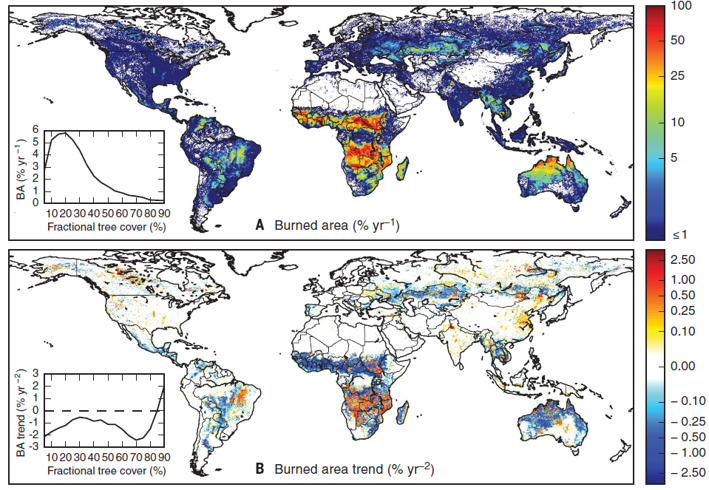How is climate change affecting fire risk? In the recent @IPCC_CH special report on #ClimateChange & land, this is assessed based on 20 scientific studies. The results show the key role of increasing fire weather and population growth in fire-prone regions. #SRCCL (Thread; 1/n)
The above figure shows a 'burning ember', it represents a synthesis of the available scientific knowledge on the topic in one intuïtive color scheme. Every color has a meaning, with darker colors denoting higher risk levels (2/n)
Transitions between risk levels can be wide or narrow, and include a confidence statement. The y-axis respresents increasing global warming levels. See O'Neill et al. (2017 NCC) for more details: https://www.nature.com/articles/nclimate3179 (3/n)
Fire is one of the few risks considered in the land report for which we have 'detection and attribution' studies at hand that formally relate anthropogenic climate change to regional increases in burned area: e.g. @climate_guy & Williams (2016 PNAS): https://www.pnas.org/content/113/42/11770 (4/n)
In addition, there is ample evidence that fire weather season is lenghtening in many regions across the world. See e.g. Jolly et al. (2015 NComm) @forestservice https://www.nature.com/articles/ncomms8537 (5/n)
"Fire weather season has already lengthened by 18.7% globally between 1979 and 2013, with statistically significant increases across 25.3% [... of vegetated land]; even sharper changes have been observed during the second half of this period (Jolly et al. 2015)". (Box 3) (6/n)
"Regional increases in burned area have been observed despite a global-average declining trend due to human fire suppression strategies". The success of fire suppression in savannas is due to management & has no link to climate change. Andela ea 2017 https://science.sciencemag.org/content/356/6345/1356.abstract (7/n)
Among the key studies used for the assessment of *future* risk is Knorr et al. (2016 NCC), who show that "globally, human exposure to fire will increase due to projected population growth in fire-prone regions". (Chap. 7) https://www.nature.com/articles/nclimate2999 (8/n)
The land report has a great text box on climate change and wildfire in Chapter 2 (Cross-Chapter Box 3): https://www.ipcc.ch/site/assets/uploads/2019/08/2c.-Chapter-2_FINAL.pdf. In addition, an excellent read on the relation between climate change and US wildfires is available from @CarbonBrief: https://www.carbonbrief.org/factcheck-how-global-warming-has-increased-us-wildfires (9/n)
The resulting 'burning ember' figure is available from the Summary for Policy makers: https://www.ipcc.ch/site/assets/uploads/2019/08/4.-SPM_Approved_Microsite_FINAL.pdf. The description of the rationale behind the figure is located in the underlying chapter 7 (section 7.2.2.6): https://www.ipcc.ch/site/assets/uploads/2019/08/2i.-Chapter-7_FINAL.pdf (10/n)
The supplementary Information of Chapter 7 details the method behind the burning ember figure development, and lists the studies that were considered for the fire damage ember: https://www.ipcc.ch/site/assets/uploads/2019/08/2j.-Chapter-7_Supplementary-Material_FINAL.pdf (11/n)
Honoured to have been part of the team developing the burning embers for the @IPCC_CH land report, together with Zinta Zommers, @WarnerKoko, Edouard Davin, Kate Calvin, @jasonpeterevans, @ProfMarkHowden and many more. #SRCCL (12/n)

 Read on Twitter
Read on Twitter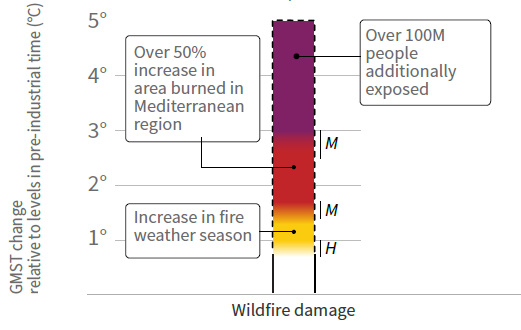
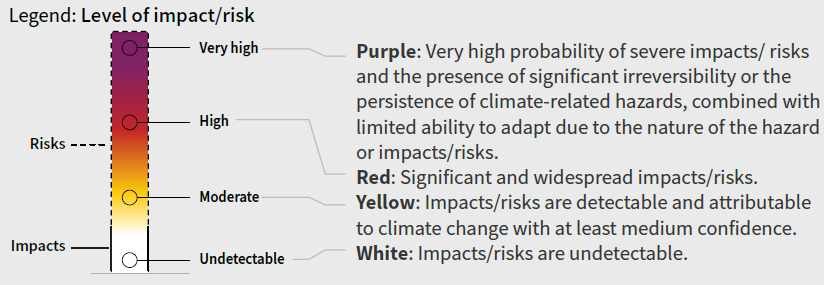
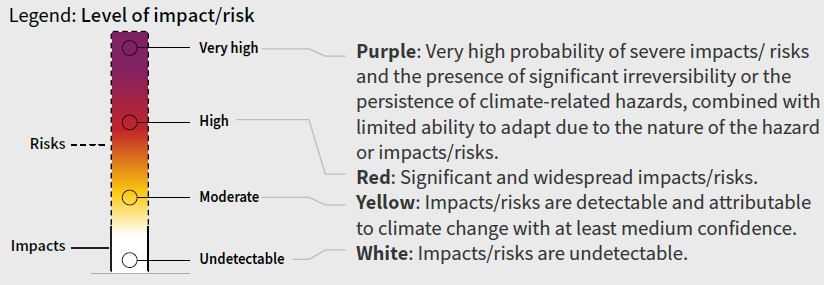
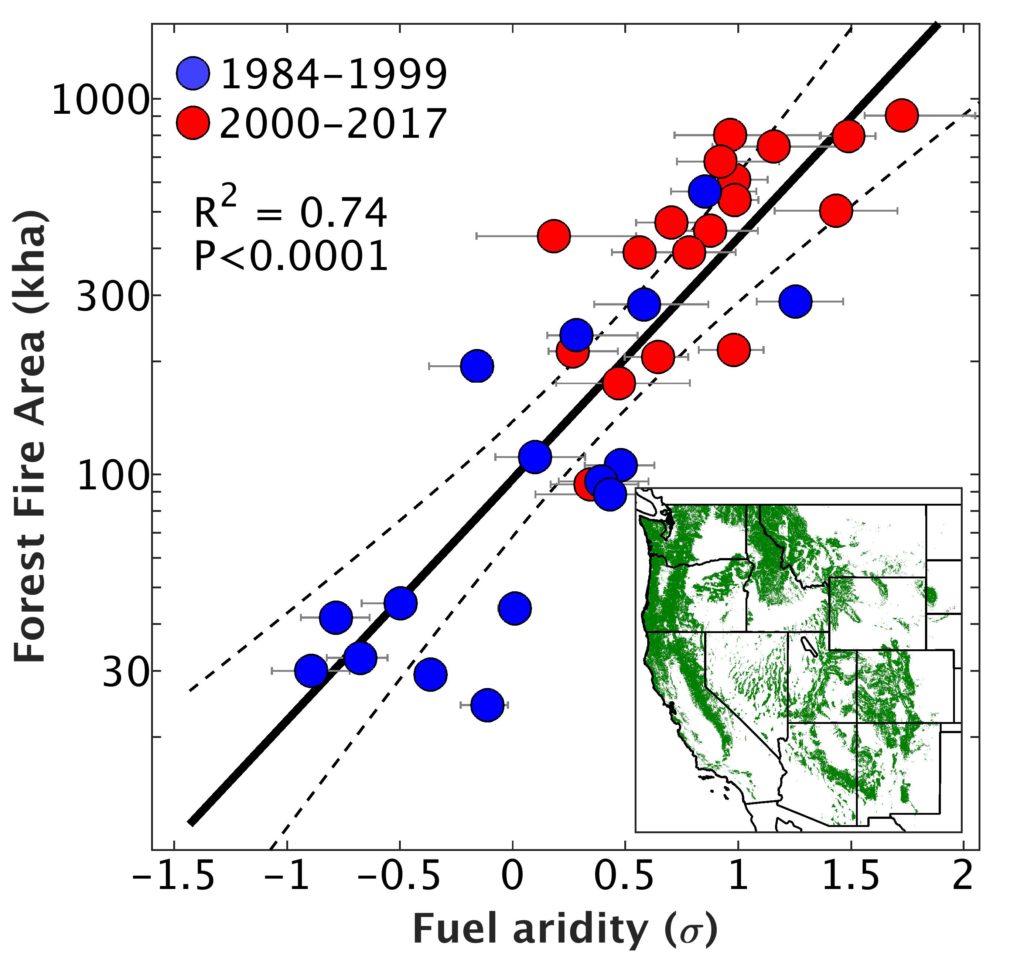

!["Fire weather season has already lengthened by 18.7% globally between 1979 and 2013, with statistically significant increases across 25.3% [... of vegetated land]; even sharper changes have been observed during the second half of this period (Jolly et al. 2015)". (Box 3) (6/n) "Fire weather season has already lengthened by 18.7% globally between 1979 and 2013, with statistically significant increases across 25.3% [... of vegetated land]; even sharper changes have been observed during the second half of this period (Jolly et al. 2015)". (Box 3) (6/n)](https://pbs.twimg.com/media/EDC6jcvXYAEifv1.jpg)
